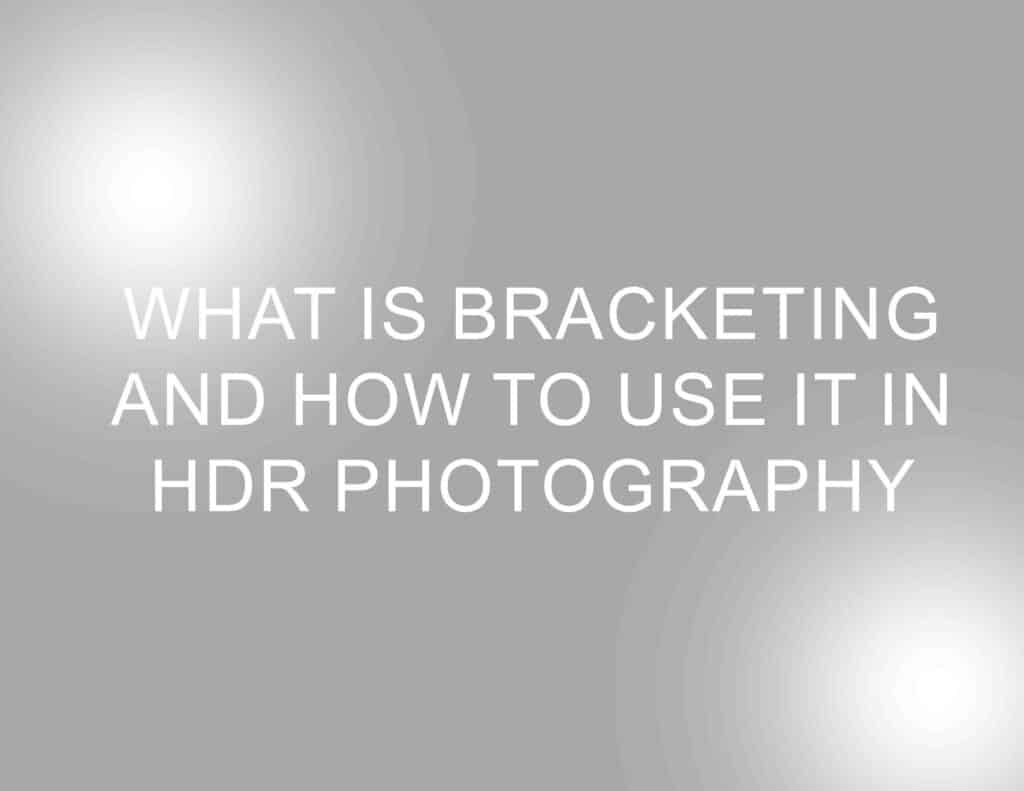Bracketing is a technique in photography that involves taking multiple shots of the same scene at different exposure settings. This is commonly used in High Dynamic Range (HDR) photography to capture a wider range of tonal values than what a single exposure can achieve.
Here’s how to use bracketing in HDR photography:
- Understanding Exposure Bracketing:
- Exposure bracketing involves taking a series of shots at different exposure levels, typically one underexposed (dark), one correctly exposed, and one overexposed (bright).
- The number of shots and the exposure increments between them can vary depending on the camera settings and the scene’s dynamic range.
- Setting Up Your Camera:
- Put your camera in Aperture Priority (A or Av) or Manual (M) mode. These modes allow you to control the aperture setting, which is important for maintaining consistent depth of field across the bracketed shots.
- Set the camera to Auto Exposure Bracketing (AEB) mode. This mode enables the camera to automatically adjust the exposure settings for each shot in the bracketed sequence.
- Adjusting AEB Settings:
- In your camera’s menu or settings, you’ll find options to set the number of shots and the exposure increment for bracketing.
- For example, you might set it to take three shots with exposures at -2EV, 0EV, and +2EV, meaning one underexposed by 2 stops, one correctly exposed, and one overexposed by 2 stops.
- Selecting the ISO and White Balance:
- Use a low ISO setting to maintain image quality and reduce noise.
- Set the white balance to a fixed value (like Daylight or Cloudy) to ensure consistent color tones across the shots.
- Using a Tripod:
- Since you’re taking multiple shots of the same scene, it’s crucial to keep the camera steady to ensure the frames align perfectly during post-processing.
- Taking the Shots:
- Compose your shot and press the shutter button. The camera will automatically take the bracketed sequence of shots according to the settings you’ve configured.
- Post-Processing for HDR:
- Use photo editing software that supports HDR processing (like Adobe Lightroom, Photomatix, or Aurora HDR).
- Import the bracketed shots into the software and merge them into a single HDR image.
- Adjust the tone mapping settings to control the final look of the HDR image. This allows you to balance highlights, shadows, and overall exposure.
- Fine-Tuning:
- After merging, you may further refine the image using additional editing techniques for color correction, contrast adjustments, and other enhancements.
Remember, not every scene requires HDR. It’s most effective in high-contrast situations where there’s a significant difference between the brightest and darkest parts of the image. Additionally, avoid using HDR in scenes with a lot of movement, as aligning bracketed shots can be challenging.
By using exposure bracketing and HDR processing, you can create images with a broader range of tonal values, revealing details in both highlights and shadows that might otherwise be lost in a single exposure.
- Brand identity elements
 In the vast marketing universe, imagery is pivotal in establishing and nurturing a brand’s identity. A brand’s visual choices are not merely aesthetic decisions but strategic moves that can significantly influence perception and performance. This Picfixs article explores the intricacies of selecting imagery that complements and enhances a brand’s essence, ensuring it resonates with the… Read more: Brand identity elements
In the vast marketing universe, imagery is pivotal in establishing and nurturing a brand’s identity. A brand’s visual choices are not merely aesthetic decisions but strategic moves that can significantly influence perception and performance. This Picfixs article explores the intricacies of selecting imagery that complements and enhances a brand’s essence, ensuring it resonates with the… Read more: Brand identity elements - 100 Best Mountain Captions and Mountain Quotes for Instagram
 Ready to scale new social media heights? Look no further than this treasure trove of 100 exhilarating captions and quotes, handpicked for your Instagram mountain posts!
Ready to scale new social media heights? Look no further than this treasure trove of 100 exhilarating captions and quotes, handpicked for your Instagram mountain posts! - Symmetry in Photography: A Creative Approach with Examples
 Delve into the enchanting realm of symmetry in photography as we showcase mesmerizing examples on our website. Experience the allure of perfectly mirrored images!
Delve into the enchanting realm of symmetry in photography as we showcase mesmerizing examples on our website. Experience the allure of perfectly mirrored images! - 11 Quarantine Photoshoot Ideas to Try at Home for Amazing Photos
 Looking for unique photoshoot ideas during quarantine? Explore the 11 creative suggestions that will help you capture unforgettable moments at home.
Looking for unique photoshoot ideas during quarantine? Explore the 11 creative suggestions that will help you capture unforgettable moments at home. - 10 Must-Try Spotlight Photoshoot Ideas and Tips
 Capturing the perfect shot requires creativity and attention to detail. Here are 10 fantastic ideas and tips to help you create stunning photos during your next spotlight photoshoot.
Capturing the perfect shot requires creativity and attention to detail. Here are 10 fantastic ideas and tips to help you create stunning photos during your next spotlight photoshoot.


